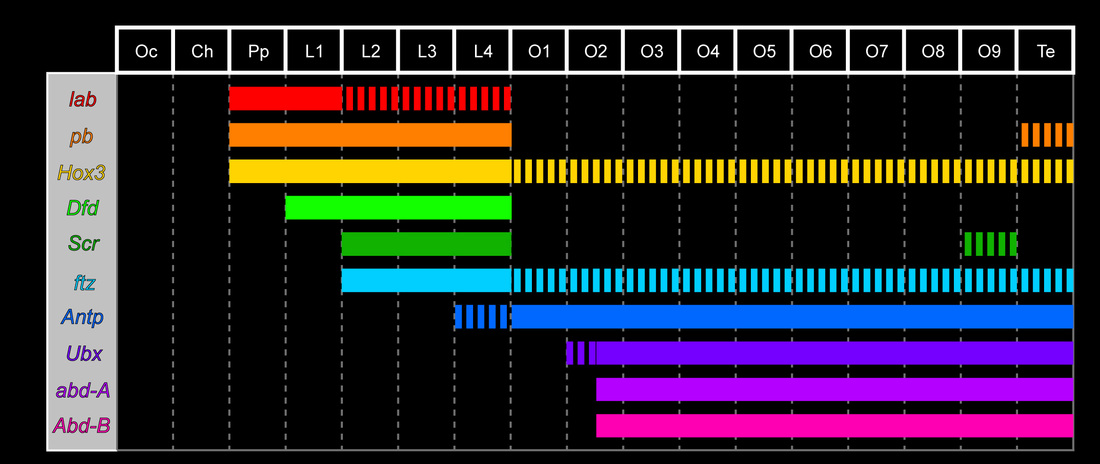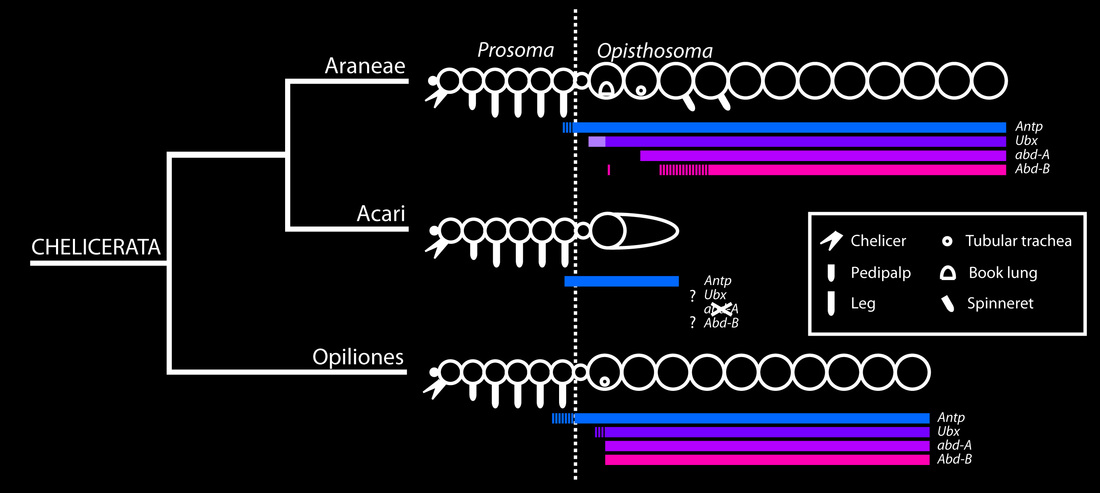Hox genes of Opiliones
We used gene expression protocols to profile expression domains of the ten Hox genes in the harvestman, in order to compare their development with that of mites and spiders. The complete suite of expression domains in the harvestman is as shown.
These data suggest that morphological diversity of the opisthosoma (the posterior tagma of chelicerates) is patterned by the posterior-most pair of Hox genes, abd-A and Abd-B. Known expression domains of these genes (principally for the spider) are shown. Note the greater differentiation of the anterior opisthosoma in the spider compared to that of the harvestman.


